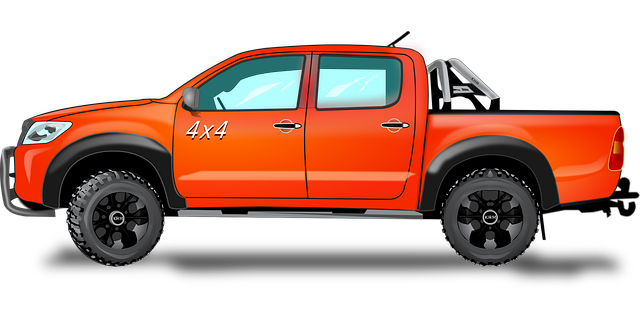In Brownsville's dynamic fleet management sector, understanding rotor functionality is key for efficient vehicle maintenance. Advanced truck diagnosis tools are essential for monitoring rotor health, preventing wear and tear, and enhancing safety. Regular inspections using these tools can identify issues like warping or corrosion in bustling urban environments. Disc rotors offer superior cooling efficiency, while drum rotors provide increased braking power but require more frequent replacement. Proper maintenance, including cleaning and immediate replacement of worn-out rotors, extends brake life and saves costs. Brownsville mechanics leverage advanced diagnosis tools for prompt issue identification through wheel balancing, pad replacement, and rotor turning/replacement. These tools revolutionize fleet maintenance by providing real-time data insights, minimizing downtime, and optimizing vehicle performance. Replace truck rotors proactively using high-quality parts and specific diagnostic checks to ensure safety and efficiency in Brownsville fleet operations.
In the heart of every Brownsville fleet vehicle lies a critical component: rotors. These rotating discs play a pivotal role in braking systems, ensuring safe and efficient stops. This article delves into the intricacies of rotors, covering their definition and purpose in Brownsville fleet vehicles. We explore different types—disc vs. drum—and their unique advantages. Additionally, we provide practical insights on inspection, maintenance, common issues, and troubleshooting techniques for truck mechanics. Discover how advanced diagnosis tools from Brownsville Fleet enhance efficiency and safety during rotor replacement.
- Understanding Rotors: Definition and Purpose in Brownsville Fleet Vehicles
- Types of Rotors: Disc vs. Drum and Their Advantages
- How to Inspect and Maintain Rotors for Optimal Performance
- Common Rotor Issues and Troubleshooting Techniques for Truck Mechanics
- Integrating Advanced Diagnosis Tools: The Role of Brownsville Fleet's Solutions
- Best Practices for Rotor Replacement: Ensuring Safety and Efficiency in Truck Maintenance
Understanding Rotors: Definition and Purpose in Brownsville Fleet Vehicles

In the world of Brownsville fleet management, understanding rotor functionality is key for efficient vehicle maintenance. Rotors, a critical component in truck braking systems, serve as the rotating part of a disc brake assembly. They work in conjunction with brake pads to slow down or stop the rotation of wheels, ensuring safe and controlled driving. For Brownsville fleet owners, utilizing advanced truck diagnosis tools becomes essential when monitoring rotor health. These tools allow for early detection of wear and tear, preventing sudden failures on the road.
The purpose of rotors extends beyond braking efficiency. In a bustling urban environment like Brownsville, where trucks frequently navigate tight corners and heavy traffic, well-maintained rotors contribute to better control and overall vehicle performance. Regular checks using diagnostic equipment can identify issues such as warping or corrosion, enabling prompt replacement or repair. This proactive approach not only enhances safety but also optimizes the life of brakes, reducing maintenance costs for fleet operators in the long run.
Types of Rotors: Disc vs. Drum and Their Advantages

When it comes to rotors in vehicles, two main types stand out: disc and drum. Each has unique advantages that play a crucial role in Brownsville fleet truck maintenance using advanced diagnosis tools. Disc rotors, for instance, offer superior cooling capabilities due to their solid construction and larger surface area exposed to airflow from the vehicle’s brakes. This makes them less prone to warping and provides consistent braking performance even under heavy loads or extreme temperatures.
On the other hand, drum rotors provide a more cost-effective solution. They are lighter in weight and require less material, making them cheaper to produce. Drum rotors also have a larger contact area with the brake pads, which can lead to increased braking power. However, they tend to heat up faster and may experience greater wear and tear over time compared to disc rotors. For Brownsville fleet managers utilizing advanced truck diagnosis tools, understanding these differences is essential for optimal vehicle performance and cost-efficiency.
How to Inspect and Maintain Rotors for Optimal Performance

Regular inspection and maintenance of rotors are essential for optimal vehicle performance, especially in a bustling urban environment like Brownsville. Using advanced fleet truck diagnosis tools, mechanics can meticulously assess rotor health. This involves checking for signs of wear, corrosion, or damage. Worn-out rotors can lead to decreased braking efficiency, increased noise, and even unsafe driving conditions.
During maintenance, it’s crucial to clean the rotors thoroughly to eliminate any grease or dirt buildup. Then, inspect them for any anomalies. If necessary, replace worn or damaged rotors immediately. Regular maintenance not only enhances safety but also extends the lifespan of other brake components, ultimately saving costs in the long run and ensuring the smooth operation of your fleet in Brownsville.
Common Rotor Issues and Troubleshooting Techniques for Truck Mechanics

Rotors are a critical component in a truck’s braking system, and their proper functioning is essential for safe driving. Common issues include wear and tear, warping, or even damage from impact. Mechanics in Brownsville can use advanced fleet truck diagnosis tools to identify these problems early on. Regular maintenance and timely repairs are crucial to prevent catastrophic failures.
When troubleshooting rotor issues, mechanics should check for visual signs of damage, measure thickness, and inspect for any deformities. Common techniques include balancing wheels, replacing worn-out pads, and in severe cases, turning or replacing rotors. Utilizing modern diagnostic tools, such as those compatible with Brownsville fleet operations, allows for precise identification and efficient resolution of rotor problems, ensuring the safety and reliability of commercial vehicles.
Integrating Advanced Diagnosis Tools: The Role of Brownsville Fleet's Solutions

The integration of advanced diagnosis tools is transforming the way maintenance and repairs are conducted, especially in the trucking industry. Brownsville Fleet recognizes this shift and offers cutting-edge solutions to streamline and optimize fleet management. Their innovative truck diagnosis tools empower mechanics and fleet managers with real-time data insights, enabling them to identify issues promptly. This proactive approach minimizes downtime and enhances overall vehicle performance.
Brownsville Fleet’s tools are designed to connect seamlessly with modern trucks’ electronic systems, providing comprehensive diagnostics. These solutions allow for efficient tracking of engine performance, tire health, and other critical parameters. By leveraging this data, fleet operators can make informed decisions, schedule maintenance proactively, and reduce the risk of unexpected breakdowns.
Best Practices for Rotor Replacement: Ensuring Safety and Efficiency in Truck Maintenance

When replacing rotors on a truck, safety and efficiency are paramount, especially in a Brownsville fleet setting where regular maintenance is crucial for operational continuity. Begin by using advanced diagnostic tools to accurately identify worn or damaged rotors. This step is vital as it prevents unnecessary replacement, saving costs and minimizing downtime. Ensure the workspace is well-lit and organized to facilitate a smooth process, allowing technicians to quickly locate components without compromise on safety.
Proper training and adherence to manufacturer guidelines are essential for rotor replacement. Use high-quality replacement parts that meet or exceed original equipment standards to maintain peak performance and longevity. Regularly inspect and maintain tools to prevent accidents during the procedure. Lastly, implement a thorough testing protocol post-replacement, using Brownsville fleet-specific diagnostic checks to verify optimal braking performance before reintroducing the vehicle into service.
Brownsville fleet vehicles rely heavily on robust rotor systems for efficient braking. By understanding different rotor types, learning maintenance best practices, and adopting advanced diagnosis tools, truck mechanics can ensure optimal performance and safety. Integrating these strategies not only extends rotor life but also streamlines maintenance processes, contributing to the overall reliability of Brownsville’s trucking operations.



